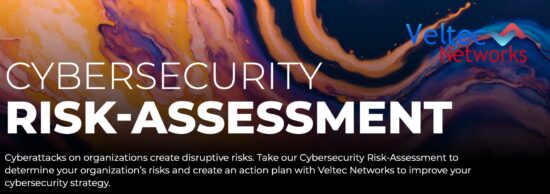Who Takes the Defensive Lead When Your Cyberattack Happens?
The number of businesses that fail due to cybersecurity incidents is depressing. Your cybersecurity incident response plan drives preparedness and prevention.
Who will handle a cybersecurity event at your company? Most likely, whoever is available at the time following whatever plan your company has made. A cybersecurity incident protection plan defines your prevention strategies and recovery action steps. It’s how you bring your team together to prepare for an incident. It’s also a useful part of your business plan, covering one of the most important risks your business faces. It’s a carefully written, regularly updated, detailed document. Ideally, it should be written in cooperation with your proactive cybersecurity partner who will join with you in implementing it.
No Plan? Let’s Make One Specifically for Your Business
If you don’t have a plan, or if yours is informal and incomplete, we can’t say that you’re alone. Industry resource TechRepublic writes that 77 percent of companies don’t have a plan in place in case of a cybersecurity incident. On the other hand, Security Magazine noted in September 2019 that 80 percent of companies they surveyed had a cybersecurity incident in the past year. Unfortunately, 54 percent of the reporting companies also indicated that their customers were “greatly or somewhat harmed” in the course of the incident. To take action today, make sure that your employees avoid social engineering attacks via deceptive phone calls and emails.
Solid Examples to Follow
This plan from Carnegie-Mellon University, a major cybersecurity research and information center, provides a framework for large-scale responses. This guide from Virginia Tech, another major cybersecurity center of excellence, outlines the documents, processes and information which should be included. Yours may be much smaller, but it’s essential: CNBC reported that sixty percent of small businesses that experience a cyberattack fail within six months. You don’t necessarily have to rebuild when hackers strike: our cloud technologies and data protection can help you avoid the crippling costs of recovery. Your business should follow these steps to prepare:
- Define your internal team and meet regularly.
- Connect with outside expert resources.
- Prioritize types of breaches and define responses.
- Make an action plan with specifics.
- List responsibilities such as FINRA or HIPAA reporting and informing clients.
- Don’t let your plan gather dust — it’s a living document. Review it and practice using it to test it.
- Train employees using the document, especially to avoid the most common risk — social engineering attacks.
What’s the First Step in an Attack? Follow the Team’s Plan
No matter who on your cybersecurity team opens the plan and takes charge during an event, they’ll call the rest of the team and reach out to external help. As your cybersecurity provider, we’re right with you in fending off an attack. We step in to slam your cyber doors and manage any ongoing breach. We strongly recommend that you consider offsite cloud storage so damage is minimized, and we’ll use that plus other techniques to get your business on its feet quickly.
When is Cybersecurity Preparedness Needed? Now.
While fire or flood may never cause you to bring out your disaster recovery plan for a real event, your cybersecurity plan will be tested. Most businesses see attacks on a monthly basis or more often. Let’s connect and make sure you aren’t part of the 77 percent without a plan anymore. Give us a call.






